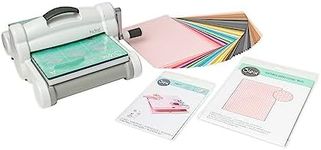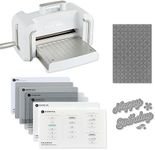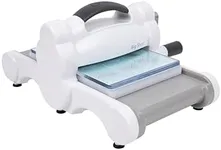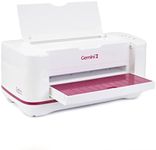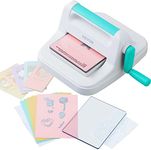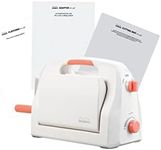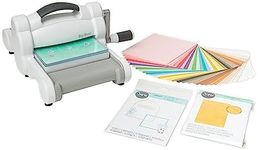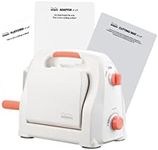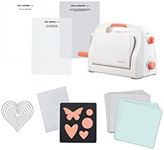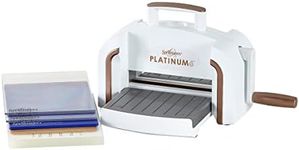Buying Guide for the Best Embossing Machines
Choosing the right embossing machine can make a big difference in the quality and ease of your crafting or business projects. Embossing machines are used to create raised designs on paper, cards, leather, metal, and other materials. To find the best fit for your needs, it's important to understand the main features and specifications that set different machines apart. By considering what you plan to emboss, how often you'll use the machine, and the types of materials you want to work with, you can narrow down your options and select a machine that will serve you well.Type (Manual vs. Electric)The type of embossing machine refers to how it operates—either manually with a hand crank or automatically with an electric motor. Manual machines are usually more affordable, portable, and simple to use, making them great for occasional crafters or those who like hands-on control. Electric machines, on the other hand, offer convenience and speed, especially for larger projects or frequent use, as they require less physical effort. If you plan to emboss a lot or have limited hand strength, an electric model might be better. For light, occasional use or portability, a manual machine could be the right choice.
Material CompatibilityMaterial compatibility describes what kinds of materials the embossing machine can handle, such as paper, cardstock, leather, fabric, or metal. Some machines are designed only for thin paper, while others can handle thicker or tougher materials. If you want to emboss a variety of materials, look for a machine with adjustable pressure or one that specifically lists compatibility with your preferred materials. Think about your main projects—if you mostly work with paper, a basic model will do, but for leather or metal, you'll need a more robust machine.
Maximum Width and ThicknessThe maximum width and thickness refer to the largest size and thickness of material the machine can accommodate. This is important because it determines the size of projects you can create. Machines with a wider opening can handle larger sheets or projects, while those with a smaller opening are limited to smaller items. If you plan to make large cards, invitations, or work with thick materials, choose a machine with a generous width and thickness capacity. For smaller crafts, a compact machine may be sufficient.
Die and Folder CompatibilityDie and folder compatibility means which embossing folders and cutting dies the machine can use. Some machines are compatible with a wide range of brands and styles, while others are limited to their own accessories. If you already own dies or folders, or want the flexibility to use different designs, check for a machine with broad compatibility. If you’re just starting out, you might not need as much flexibility, but it’s still good to consider future needs.
Ease of Use and SetupEase of use and setup refers to how simple it is to operate and set up the embossing machine. Some machines are straightforward, with clear instructions and minimal parts, while others may require more assembly or have a steeper learning curve. If you’re new to embossing, look for a machine that’s known for being user-friendly. If you’re experienced or enjoy tinkering, a more complex machine might not be an issue.
Portability and SizePortability and size describe how easy it is to move and store the embossing machine. Smaller, lighter machines are easier to carry and store, making them ideal for those with limited space or who like to craft on the go. Larger machines may offer more features or capacity but can be bulky. Consider where you’ll use and store the machine—if space is tight, a compact model is best; if you have a dedicated workspace, size may be less of a concern.
